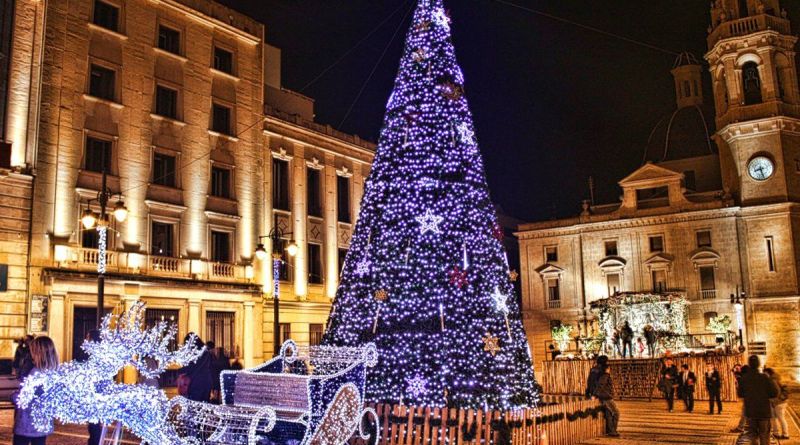If you are spending Christmas in Spain, there are certain words you need to know. To help you understand what Spaniards are talking about this Christmas, we have compiled a list of Spanish words in alphabetical order below.
A: “Arbol de Navidad” (Christmas tree) and “ángel de Navidad” (Christmas angel).
B: “Belén” (meaning Bethlehem or nativity scene), and the verb “brindar” (to toast), which can also be referred to as “brindis.” “Buena Noche” is also a word you will hear a lot as it is the Spanish name for Christmas Eve and the big family feast.
C: “Cabalgatas” (parades) of the Three Wise Men on January 5. “campanadas” the bell chimes at midnight on New Year’s Eve.
D: The “décimo” is a €20 ticket for Spain’s El Gordo Christmas Lottery, which gives you the chance of winning the top prize of €400,000.
E: There’s “la estrella de Navidad” (Christmas star).
F: “Felices fiestas” (happy holidays).
G: Gordo or El Gordo (the fat one) is regarded as being the biggest lottery in the world, and rather than a few prizes, thousands of people get a share of the money.
H: If we have a cold spell in the run-up to Christmas, you may hear people talking about “hielo en la carretera” (ice on the road).
I: “El Día de los Inocentes”, is Spain’s versión of April Fools’ Day and takes place on December 28.
J: Jesus or “el niño Jesús” (baby Jesus)is a word you will probably not just hear at Christmas but year-round as nearly 300,000 men in Spain are named Jesus.
K: K is “kilogramo”, the measure you’ll be using when shopping for seafood and other Christmas treats.
L: “Langostinos” (king prawns), a favorite on Christmas dinner tables.
M: During the Christmas period, Spaniards eat a lot of seafood which is called collectively “mariscos” (seafood). There’s also the “misa del gallo”, the Catholic Mass celebrated around midnight on Christmas Eve. If you were wondering what the Spanish word for mistletoes is, it is “muérdago.”
N: “Navidad” is of course, Spanish for Christmas, and the word “Navidades” refers to the entire Christmas period. New Year’s Eve in Spain is called “Nochevieja” and is when Spaniards hastily eat 12 grapes at midnight for good luck in the New Year. if you are lucky enough to have snow (“nieve”), you will have what the Spanish call a “Blanca Navidad.”
O: In the Basque parts of Spain, Santa Claus called the “Olentzero.”
Technically it isn’t Spanish but Euskera.
P: P is for “Papá Noel” (Santa Claus) and for “polvorón,” a very powdery and crumbly shortbread that’s eaten a lot at Christmas in Spain.
Q: Q is for “queso” (cheese), which is eaten in abundance at Christmas in Spain.
R: There’s the “Reyes Magos” (the Three Wise Men) who are bigger than Santa in Spain and give kids the bulk of their Christmas presents on January 6, and the “Roscón de Reyes”, a crown-shaped cake. R is also for “regalos” – presents.
S: S is for “solomillo,” a good quality filet mignon steak that Spaniards often choose as part of their Christmas menu.
T: Spain’s main sweet Christmas treat is “turrón”, a nougat-style chocolate bar that comes in a wide variety of flavors and styles.
U: Spaniards scoff down twelve “uvas” grapes every time the bells chime at New Year’s.
V: Spain’s traditional Christmas songs are known as “villancicos,” folk-style tunes which often feature a fish drinking river water, a donkey, and a drummer.
Z: We finish off this A to Z of Spanish Christmas vocab with the “zambomba,” a strange friction instrument that is often played during “Navidad” in Southern Spain





Leave a Reply